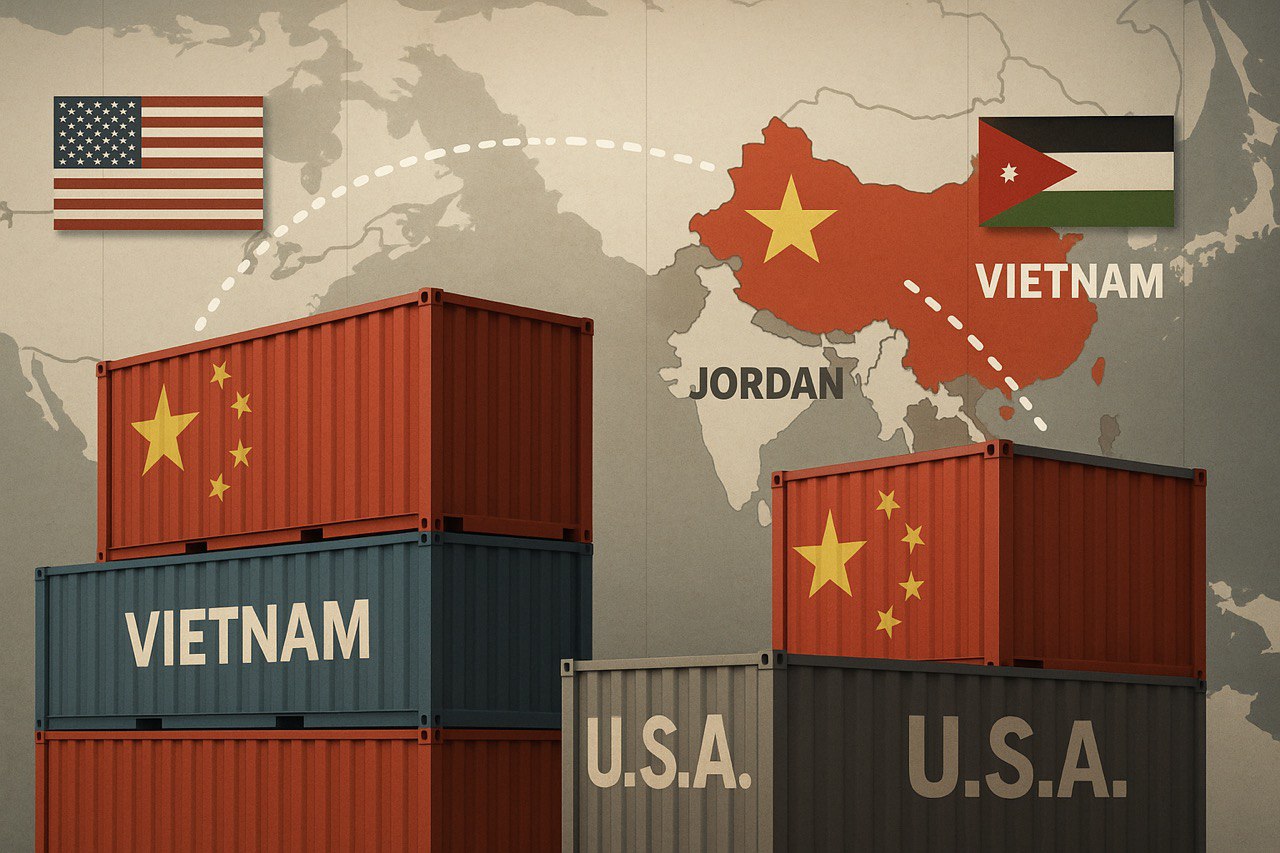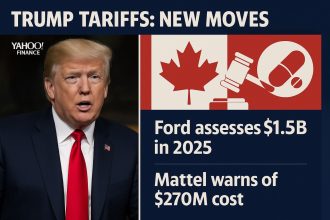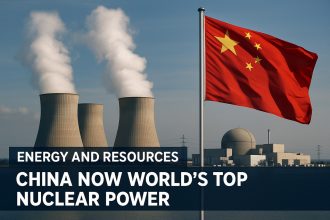The trade war between the US and China has intensified under President Donald Trump, with tariffs on Chinese goods reaching as high as 145%. These tariffs, part of Trump’s “America First” policy, aim to protect US industries and reduce the trade deficit, which stood at significant levels in 2024. China, in response, has imposed retaliatory tariffs on US goods, but the impact on its export-driven economy has been notable, prompting innovative strategies to maintain market access.
China’s Rerouting Strategy: Mechanics and Examples
China’s approach involves rerouting goods through third countries to alter their country of origin, thereby avoiding US tariffs. This strategy is not new, with experts noting its use for over a decade. Specific examples include:
- Solar Panels: After the US imposed 30% tariffs on Chinese solar panels in 2018, manufacturers shifted assembly to Southeast Asian countries like Malaysia, Thailand, Cambodia, and Vietnam. The US Commerce Department presented evidence in 2023 of this circumvention, showing finished products being sent to the US from these countries.
- Temu Seller in Jordan: A seller on the online marketplace Temu is building factories in Jordan for final touches, ensuring goods appear to originate there before shipping to the US, as reported by Newsweek.
- Canada as a Storage Hub: Chinese companies are also rerouting cargo to Canada, storing goods in bonded warehouses to avoid US tariffs, with storage costs estimated at $1,750 per container per week.
Sectors involved include consumer goods, chemicals, auto parts, and electronics, reflecting the broad scope of this strategy. This rerouting is facilitated by setting up operations in third countries, sometimes for minimal processing, to legally change the goods’ origin under international trade rules.
US Countermeasures: Tariffs, Loophole Closure, and Pressure
The US has responded with several measures to counter this strategy, as detailed in recent reports:
- Reciprocal Tariffs on Third Countries: Trump imposed “reciprocal” tariffs on countries like Vietnam, now facing a 46% tariff on exports to the US, though these are paused for negotiations. This aims to discourage third countries from facilitating Chinese goods.
- Elimination of De Minimis Exemption: Effective May 2, 2025, the US eliminated the “de minimis” tariff exemption for goods valued under $800 from China and Hong Kong, previously allowing duty-free entry for small packages. This closes a significant loophole, with US Customs and Border Protection rejecting such entries.
- Pressure on Trade Partners: Trade advisor Peter Navarro has labeled Vietnam the “poster child for nontariff cheating,” and the US is pressuring countries like Cambodia, Mexico, and Vietnam to alter “rules of origin” and limit trade with China if they wish to continue exporting to the US.
Enforcement remains challenging, with experts like Nicholas Lardy noting the difficulty in tracking ownership of millions of daily shipments, likening it to a “whack-a-mole” game.
Risks and Challenges for China
While effective in the short term, China’s strategy faces several risks:
- High Storage Costs: Storing goods in Canada, for instance, incurs significant costs, estimated at $1,750 per container per week, which could become unsustainable if the trade conflict prolongs.
- US Pressure on Third Countries: If the US succeeds in negotiations with countries like Vietnam and Cambodia, China’s options for rerouting could diminish, potentially disrupting supply chains.
- Long-Term Sustainability: Experts suggest that prolonged trade conflicts, especially with upcoming US-Mexico-Canada Agreement negotiations, could make this strategy less viable, potentially disrupting domestic manufacturing in third countries.
From a journalist’s perspective, these workarounds often lead to unintended consequences, and it’s unclear if China is fully prepared for the long-term implications.
Implications for Consumers and Businesses
The ripple effects of this strategy are significant for both consumers and businesses:
- Consumer Impact: US consumers may face higher prices for goods like electronics, clothing, and solar panels, as rerouting adds costs. For example, if tariffs are applied to goods from Vietnam or storage costs in Canada are passed on, prices could rise, potentially leading to delays or shortages.
- Business Challenges: Companies reliant on Chinese suppliers must navigate complex supply chains, possibly seeking alternative sources or adjusting logistics. This could lead to increased costs and operational disruptions, especially for sectors like consumer goods and auto parts.
Globally, this strategy underscores the interconnected nature of trade, with third countries like Jordan and Vietnam caught between US and Chinese interests. It’s a high-stakes balancing act, and the long-term sustainability remains uncertain, especially as trade tensions continue.
Amidst this trade turbulence, financial tools can help businesses and investors stay ahead. Recently, a colleague mentioned PocketOption, a trading platform gaining attention for its user-friendly interface and ability to trade assets like stocks, commodities, and currencies. Given the current climate, where prices and availability can fluctuate rapidly, such a platform might be beneficial for those looking to navigate the uncertainty. You can explore it at PocketOption.
China’s use of third countries to bypass US tariffs is a testament to the ingenuity of global trade dynamics, but it also highlights the complexities of enforcing trade policies in an interconnected world. As of May 5, 2025, the US and China continue their standoff, with potential implications for global supply chains and economic relationships. The future of this strategy depends on negotiations, enforcement capabilities, and the evolving trade landscape, making it a topic worth watching closely.





